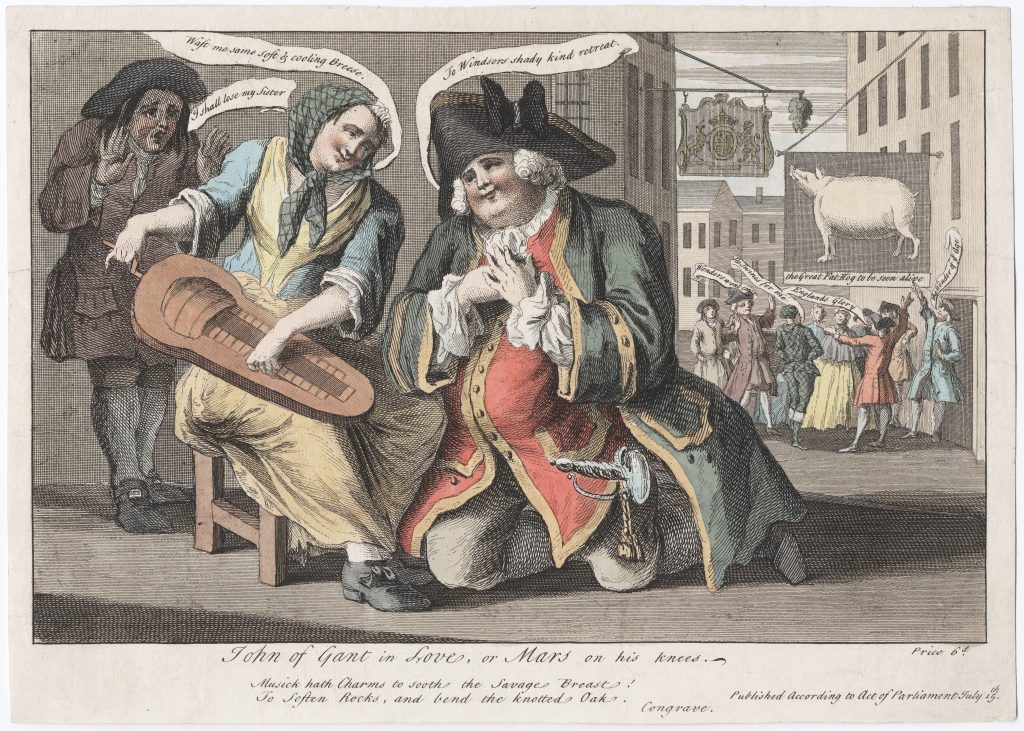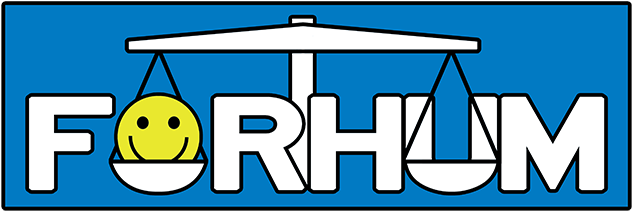
Mode of expression: Caricature
Publication: Singlesheet print, etching
Region: Great Britain
Relevant dates: Summer 1749 (publication); September 1749 (legal inquiries)
Outcome: prosecution abandoned
Judicial body: not applicable
Type of law: Seditious Libel
Themes: Defamation, Reputation, Satire, Libel
Context
In the summer of 1749, four satirical prints appeared for sale in London, each seemingly referring to a rumor that had been circulating for months. Earlier that year, during either the spring or early summer, William Augustus—the Duke of Cumberland and third son of King George II—had allegedly propositioned a young Savoyard girl after hearing her perform a version of the poem The Midsummer Wish on a hurdy-gurdy. According to Horace Walpole (1937–83, vol. 9, p. 94)—a notorious gossip, Member of Parliament, and son of the former Prime Minister Sir Robert Walpole—the girl had rebuffed Cumberland’s advances.
The four prints seized on the rumor, referring to Cumberland cuttingly as “John of Gant.” This nickname was a layered jab, mocking both his corpulence and his military failures in Ghent in 1745 and 1747, while also riffing on a recent political allegory. Just months before, The Remembrancer, a periodical, had published a satirical piece likening King Edward III (a thinly veiled King George II) to his supposedly favored son, John of Gaunt—coded as Cumberland—over his elder son, the Prince of Wales (i.e., Cumberland’s actual brother, Frederick). The satire, in short, touched multiple cultural nerves: political favoritism, military incompetence, and lascivious rumor.
Legal Case
The sale and circulation of these prints did not go unnoticed. Thomas Pelham-Holles, the Duke of Newcastle and Secretary of State, initiated an investigation (Atherton, 1974, p. 77). By 1749, The Crown had at its disposal a well-developed set of courtroom procedures for prosecuting wayward satirists (Bricker, 2022). Those legal techniques had emerged in the early eighteenth century, following the lapse of statutory licensing laws in 1695, which had permitted government censors to vet all works before publication. With licensing never to return—making England the only country at the time in Europe to lack pre-publication censorship—the Crown had turned to the courts and specifically the broad canopy of libel laws, which soon became the government’s main tool for managing the press (Hamburger, 1985).
Yet the legal tools at the government’s disposal were shaped overwhelmingly by the conventions of verbal satire. The machinery of prosecution—including courtroom rules guiding interpretation and evidence—was largely attuned to parsing words, not images. Visual satire, which remained a relatively minor genre in the early eighteenth-century print market, had largely escaped rigorous legal scrutiny.
Nevertheless, in September 1749, Newcastle ordered the arrest of those believed to be behind the John of Gant prints and deposed several print sellers linked to their sale. All refused, however, to name names, claiming ignorance about the prints’ origins and creators. Despite the Secretary of State’s efforts, and the Attorney General’s preliminary attempts to bring charges, the government eventually dropped the case.
Analysis
The John of Gant satires—alongside the rise of caricature itself, which tended to rely on comic physical distortions and slippery intertextual visual allusions—posed a special challenge to the law. During the first half of the eighteenth century, the Crown had focused concertedly on developing courtroom procedures for the interpretation of verbal satire, largely ignoring the field of visual satire, which constituted at the time a relatively minor aspect of the print marketplace.
The failed prosecution of the John of Gant satires proved a pivotal moment for both government authorities and the world of visual satire. It exposed a major blind spot in the application of libel law: the legal system, so practiced in dissecting the verbal elements of satire, had no coherent procedure for interpreting images. The John of Gant prints did not identify Cumberland by name, and one print omitted him entirely. Instead, they relied on oblique references—interwoven literary, journalistic, and historical allusions—that required a canny eye. To persuade a jury that these images explicitly and unlawfully defamed Cumberland would have been nearly impossible.
This legal ambiguity surrounding visual satire was not lost on government officials. In 1812, for instance, the Solicitor General explained the situation to the Secretary of State when contemplating the prosecution of another visual satire: “This is a most indecent and imprudent print but it would require so much of difficult explanation in stating it as a libel that it does not appear to us advisable to make it the subject of a criminal prosecution” (qtd. Gatrell, 2007, p. 503).
Visual works were difficult to prosecute in large measure thanks to their imagistic language, including their techniques of identification and the way they economically produced satiric meaning. Those same visual qualities, which had developed over decades, also facilitated folk interpretation among everyday onlookers. Viewers had intuitively come to understand the visual language of satire, which drew on a common stock of images, including allegorical appeals to history, literature and the Bible; everyday folk images, emblems and dream-visions; personifications of abstractions like law, religion and politics; and the reduction of nations and people down to animalistic types. This reliance on a stock of visual tropes also helps to explain why words became increasingly rare in visual satire during this period: imagistic language often made such verbalizations redundant.
The law thus helped to encourage the growth of caricature and visual satire more generally. It was not, of course, the only factor. Other developments, whether commercial, aesthetic or technological, also prodded along the visual marketplace, including the emergence of eye-grabbing, hand-colored prints in the 1760s and the gradual expansion of print sellers across London, whose shop-windows enabled everyday viewership and promoted visual literacy even among the illiterate. Nonetheless, the failed prosecution of the John of Gant satires, alongside a growing awareness among both visual satirists and the authorities alike of the limits of libel laws to redress visual works, unintentionally and indirectly help to encourage the rapid and seemingly unabated growth of visual satire during the last half of the eighteenth century.
Sources and further reading:
Herbert Atherton. Political Prints in the Age of Hogarth: A Study of the Ideographic Representation of Politics (Oxford: Clarendon Press, 1974).
Andrew Benjamin Bricker. Libel and Lampoon: Satire in the Courts, 1670-1792 (Oxford: Oxford University Press, 2022).
Vincent Carretta. The Snarling Muse: Verbal and Visual Political Satire from Pope to Churchill (Philadelphia: University of Pennsylvania Press, 1983).
Diana Donald, “‘Calumny and Caricatura’: Eighteenth-Century Political Prints and the Case of George Townshend,” Art History 6, no. 1 (March 1983): pp. 44–66.
Diana Donald. Age of Caricature: Satirical Prints in the Reign of George III (New Haven: Yale University Press, 1996).
Vic Gatrell. City of Laughter: Sex and Satire in Eighteenth-Century London (New York: Walker & Co., 2007).
Mark Hallett. The Spectacle of Difference: Graphic Satire in the Age of Hogarth (New Haven: Yale University Press, 1999).
Philip Hamburger. “The Development of the Law of Seditious Libel and the Control of the Press.” Stanford Law Review 37, no. 3 (February 1985): pp. 661–765.
Horace Walpole. Yale Edition of the Correspondence of Horace Walpole, edited by W. S. Lewis, et al. (New Haven: Yale University Press, 1937–83).
